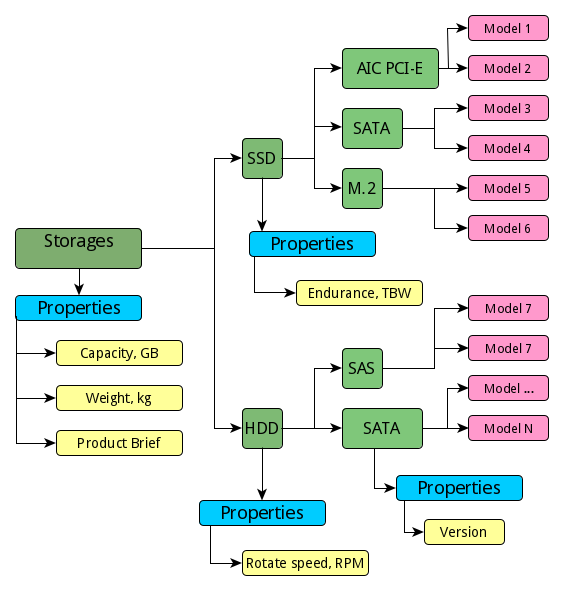The EAV-model is designed to store hierarchical and sparse structures in relational databases.
The EAV-approach is widespread among programmers, but with the advent of IRIS Native API, is it worth using it further?
Entity-attribute-value model in relational databases. Should globals be emulated on tables? Part 1.
Entity-attribute-value model in relational databases. Should globals be emulated on tables? Part 2.
Make a comparison of the performance approaches on the numbers. I want to see how much time it takes to create thousands of products, as well as to access them using IRIS Native API and EAV (MySQL).
In the project, a data scheme is created the same as in real projects on IRIS globals and SQL for objective comparison.
Transactions are used in both approaches. Products are created in random sections of the catalog.
When testing the loading of product properties, random products are loaded to make it harder to use caching database techniques.
The structure of the demo data that we will store:
Global for this structure created in beginning schema.py.
SQL schema schema.sql.
I created a usefull library in Python iglobal.py that allows you to work with globals in an object-oriented way.
node = good.node('index1', 'index2')
node.set(5)
node.inc(2)
i = node.iterator()
print(node.get())
good.kill()
You may initialize whole tree with one operation:
good = iGlobal('good')
good.init(
{'Storages':
{ 'id' : 1,
'Properties':
{'capacity':
{'name': 'Capacity, GB',
'sort': 100,
'searchable': 1,
'table_view': 1
},
'weight':
{'name': 'Weight, kg',
'sort': 800,
'searchable': 1,
'table_view': 1
}
},
'SSD':
{'id' : 2,
'Properties':
{'endurance':
{'name': 'Endurance, TBW',
'sort': 200,
'searchable': 1,
'table_view': 1
}
},
'AIC PCI-E': {'id': 3},
'SATA': {'id': 4},
'M.2': {'id': 5}
}
}
}
)
First time running ~2-15 minutes. Depending on the speed of your internet. After the 1st time running the next ones will perform better and take few seconds.
docker-compose build
docker-compose up -d
Go to localhost:5000
After starting containers open another terminal (under root user) and type commands:
docker ps
See IRIS container name (column NAMES)
# Go in IRIS container
docker exec -it IRIS_CONTAINER_NAME bash
# inside container
cd /app
python3 cmd.py
docker-compose stop

